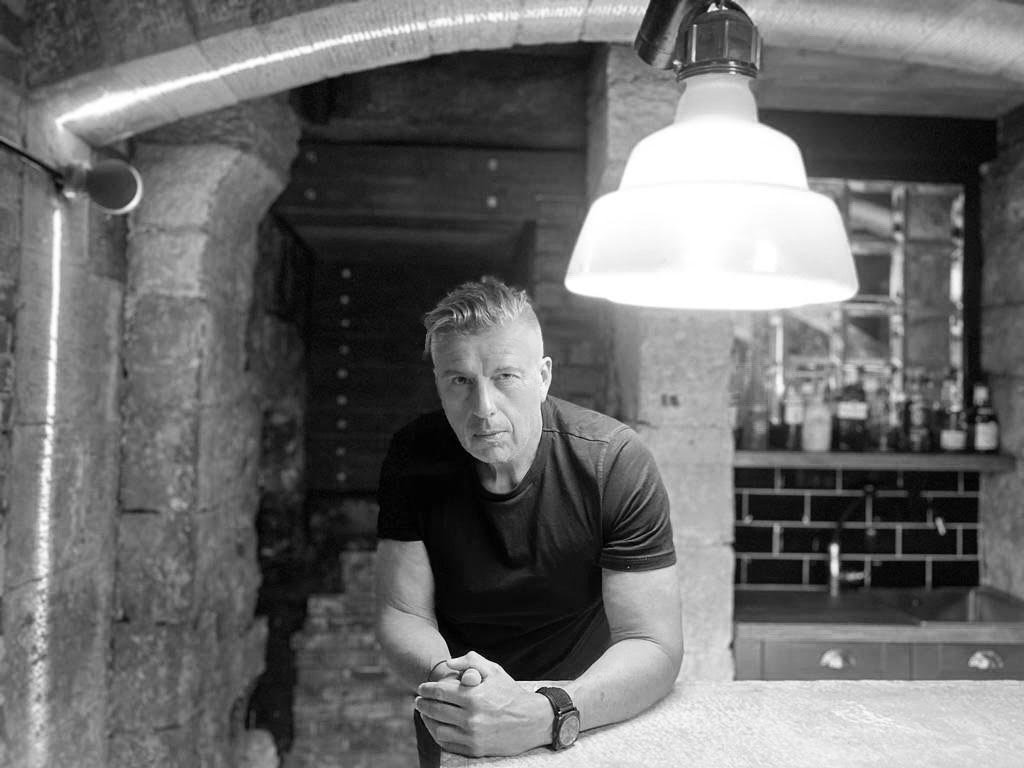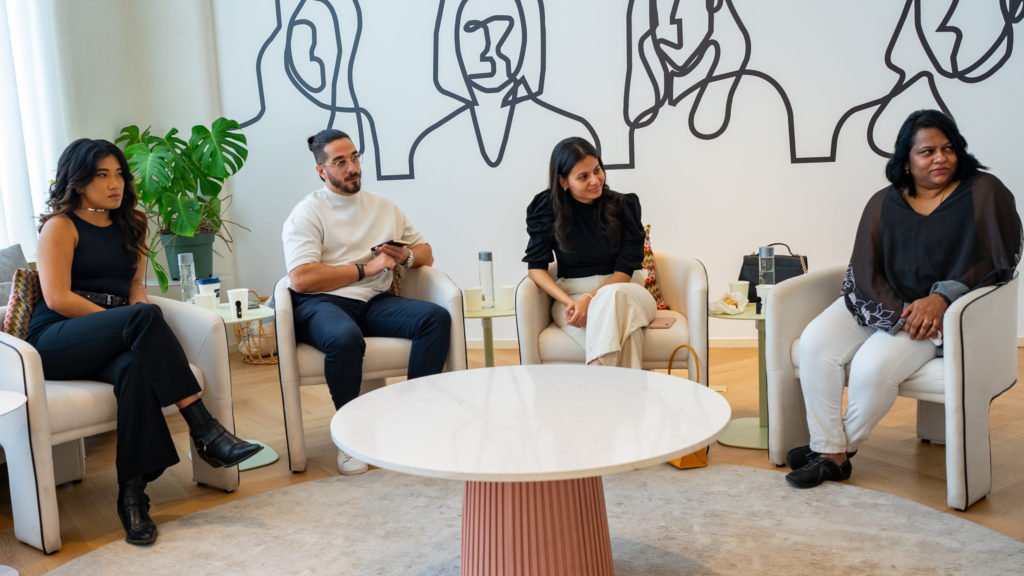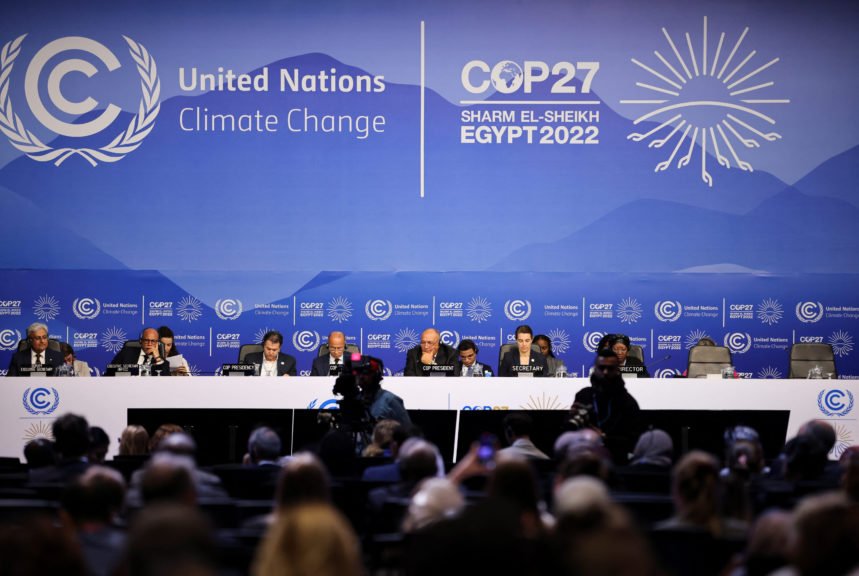
Architect, designer, athlete and professional rugby player, Lawrie Nisbet is strong follower of sustainability. He founded LDPi, a leading lighting design firm that spread its expertise from the UK, Middle East and India, and is now venturing into the Saudi Arabian market of design and development.
His latest co-working project is a concept inspired from the Swedish rock band, The Hives. The space will be based in a private coffee shop to bring visitors to the exclusive and elite private space experience. One has to be a member to enter, they will have a desk, their own printing and office facilities, all hidden behind a cool coffee bar and music venue.
My Design Journey
Architecture was not my first choice, I stumbled upon it by accident. I was associated with athletics, like track and field, and played professional rugby. Eventually, my path led me to a role in a lighting design company before starting LDPi in 2000.
I don’t like to be referred to as a lighting designer, to be honest, because I believe that the conversation should be about design in the bigger picture, and not only about lighting separately. In my experience, the world of lighting tends to become very insular and miopic.
The lighting industry tends to focus on specifying the equipment and light fittings, and manufacturers want to sell as many fittings as possible, even if it is not considered as good design and does not go with sustainability. And I feel that the lighting community sticks with the manufacturers for the perks, awards and recognition.
LDPi is a completely international design firm and we are spread across the world. However, I am highly interested in property development, and have always been. We have just signed a joint venture with a local developer to start the first Saudi-based lighting design firm that will employ local candidates. We want to work with developers, understand their market, design and interests, and we want to be properly involved and part of the growth. We feel that the only way to do that is to actually invest in the market, and so, instead of taking money away from the kingdom, we are actually putting money into it and investing in it. As far as I know, nobody else is doing that yet.
Artisan House, a private residence in India designed by Morphogenesis Architects. LDPi utilised minimal, indirect lighting techniques to create a softly illuminated backdrop of materiality.
Designing the Parks at EXPO 2020
The important thing about working at the EXPO was understanding that there will always be a dramatic backdrop to your work. I remember saying in meetings that we cannot design the EXPO as decentralised spaces, instead every space has to be read in context. Behind every pavilion, park and feature, there is the biggest circus anyone has ever seen! So getting the client to understand that the spaces in the front don’t have to be a circus as well, was a task on its own. We wanted the public spaces not to compete, but to complement each other, and that’s how the parks came about to be. We had a gigantic backdrop, which was the Al Wasl Dome where the lighting is crazy and it’s everywhere! It has media projections, spots, floodlights and all sorts, so the experience outside has to be engaging and taken down to the human scale. This is done so that the visitors can relax, pick up spaces and textures around them that they can relate to and absorb. So the idea was to create balanced places where one can have both the experiences.
We have done a lot of public realm spaces as architects and urban designers, and we understand how light works in such spaces. We did the master planning of the whole EXPO 2017 in Astana, Kazakhstan with Adrian Smith and Gill, and our experience from that gave us an upper hand when it came to the Dubai EXPO.
We partnered with iGuzzini, whose products we have been using for many years. Buying a product is not simple, as it involves installation, fixing and wiring. There are so many details that could go wrong and so many things that are involved, such as installation and power, and it is the ability to handle these details that tells us if a company is good or not. This is where iGuzzini has proven themselves time and again of their expertise. We usually use multiple manufacturers for different specifications, using their signature products in order to deliver the best output. And we are very realistic about this approach.
LDPi provided site-wide architectural and interior lighting design for the World Expo 2017, Astana. With the theme ‘Future Energy’, lighting proposals within the 18 hectare site were developed to be energy conscious and integrating future usage and transition post-expo
Sustainable Design
You should not need a sustainability consultant to tell you what is a good design. Because sustainable design is good design.
Sustainability is a code, a practice, and a choice beyond all calculations and checklists. It has to lead to discussions on common sense and good design. I would like to bring up the works of Geoffrey Bawa, a very famous Sinhalese architect, who was producing ideas and concepts 50 years ago that were equally sustainable if not more. A hotel that he conceptualised had wooden doors positioned in such a way as to maximise daylight, utility and airflow. He created concepts that were sustainable in terms of daylight penetration for a space that was surrounded by nature and greenery. To me, that is what qualifies as sustainable design.
Sustainability is not about trying to tick boxes and score points, because if it’s anything to do with figures, one can always cheat. If a designer is creating spaces where people can see things, they can’t actually cheat. For me, good design is inherently sustainable design, and good design lasts the test of time.
If we take a hotel for example, the design could be done very sustainably, but the design life of that hotel may only be five years. It is then eventually refurbished and that leads to wastage, a need for more resources, and products that eventually end up in a landfill. There is no longevity in this design and thus, whether or not constructed sustainably, this project is not truly sustainable. Sustainability, in the current industry, is driven by point scoring done by sustainability experts who do not understand design. It is scored by project managers and administrators who are not creative people. Creative people evaluate design and the requirements with their visualisation. They read composition, textures and surfaces, and we need more such creative people, not someone who does calculations to explain and assess sustainability. The more numbers and calculations take over sustainability, the more it becomes a scoring mechanism and pushes creative people and their concepts away, which marginalises everything that’s there. Sustainability and lighting design thus become calculation driven, and any good design should be beyond that.
At the EXPO, there is a huge amount of indirect illumination already existing, which questions the need for additional lighting. In spaces like a mall, the store front lights are sufficient to light up the space even when all other lights are off. The human eye is attracted to the brightest of things eventually, and one does not need supplementary lights of high brightness around.
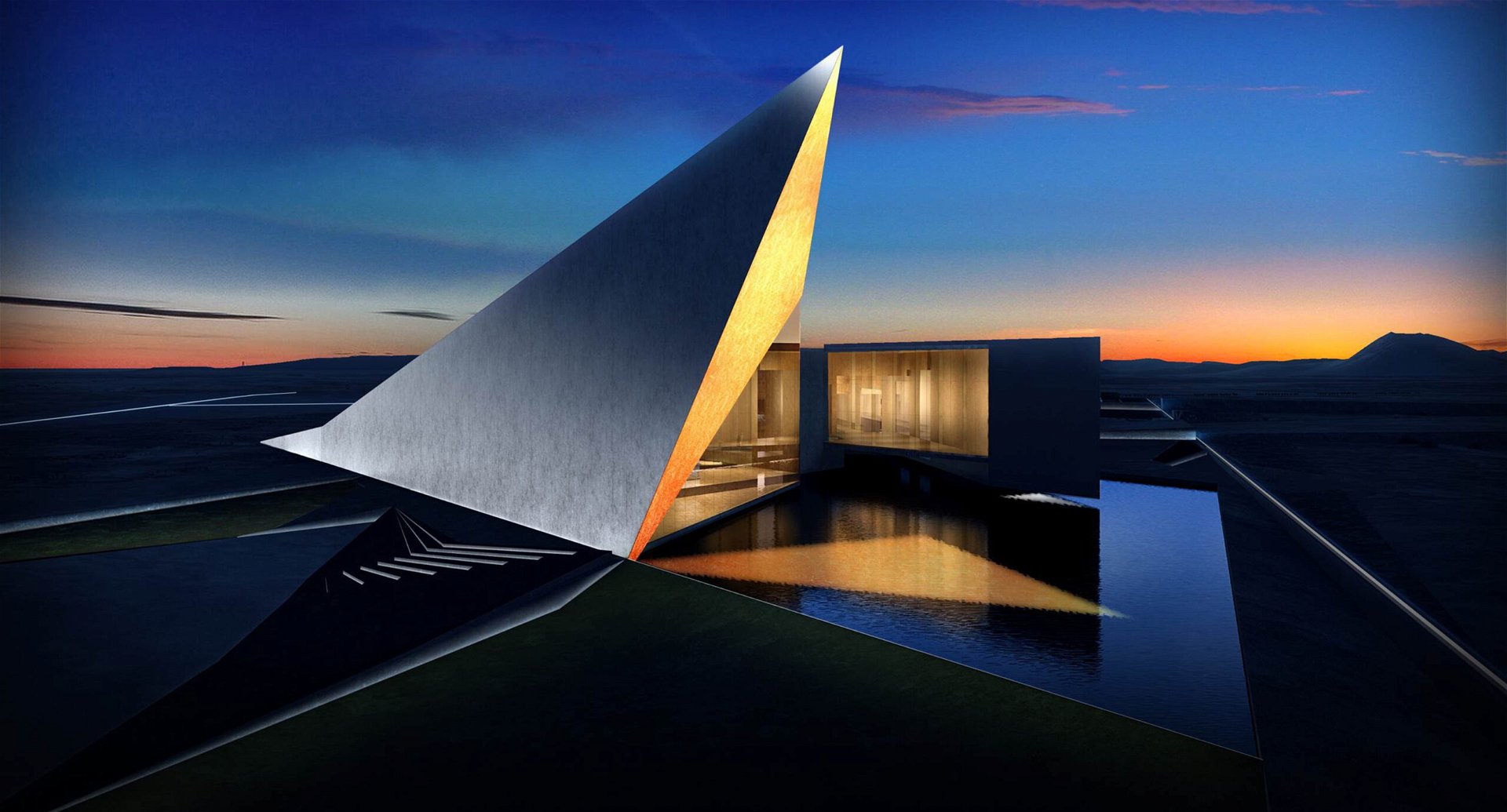
Oman Museum Concept in Nizwa designed by Cox Architecture, Space Agency, lighting design by LDPI. This new Renaissance Museum Project will be a cultural and educational hallmark for all Omanis and all visitors to Oman.
Predetermined Standards and Legislation
We have standards and regulations to guide us, but I believe that they are set too high in the first place, which sometimes is just absurd. I am inclined to believe that maybe these regulations are set by the engineers who are sponsored by the lighting industry to sell their equipment, not to forget that these were set 20 years ago. So fundamentally, the whole position is deeply flawed. Designers should take the responsibility to at least question them.
If these regulations and standards were set for our safety, a few rules dictating the need for a streetlight when the road is already lit up by media boards and building facades seems unnecessary. I think it’s time we question this need, and demand proof for these rules and the benchmarks, when these benchmarks by default are wrong or inaccurate.
Future cities will be created with interactive facades, buildings, media, etc. That is what will create environments of the future, not streetlights.
If you had the chance to notice the paths of expo leading to the pavilions, parks and features, do not have street lights but just simple indirect light off the palm trees. This is similar to the design of Barr Al Jissah, Muscat, when the Shangri La was made 15 years ago. The psychology behind this is very simple – we knew that the hotel was going to have 80 percent of night arrivals, so guests would be arriving in the dark. Eliminating streetlights and keeping the lighting low key would set the scene and leave the impression to expect something scenic and beautiful the next morning. The same concept was adopted at Muscat International Airport as well, which helps set certain expectations and experience when arriving into a country for all the night arrivals.
The other design challenge for the Barr Al Jissah was that the location was sensitive to turtle hatching. Since turtles usually use moonlight as their guiding mechanism, the lights had to be sensitive so as not to disrupt nature’s course and their needs.
There is the idea of sustainability and the practice of it. But we need to have guidance for this. All lighting designers do have guidance for the mass market, but when it comes to custom made more refined specifications, we need to reach a point where there needs to be a guidance set for these too.
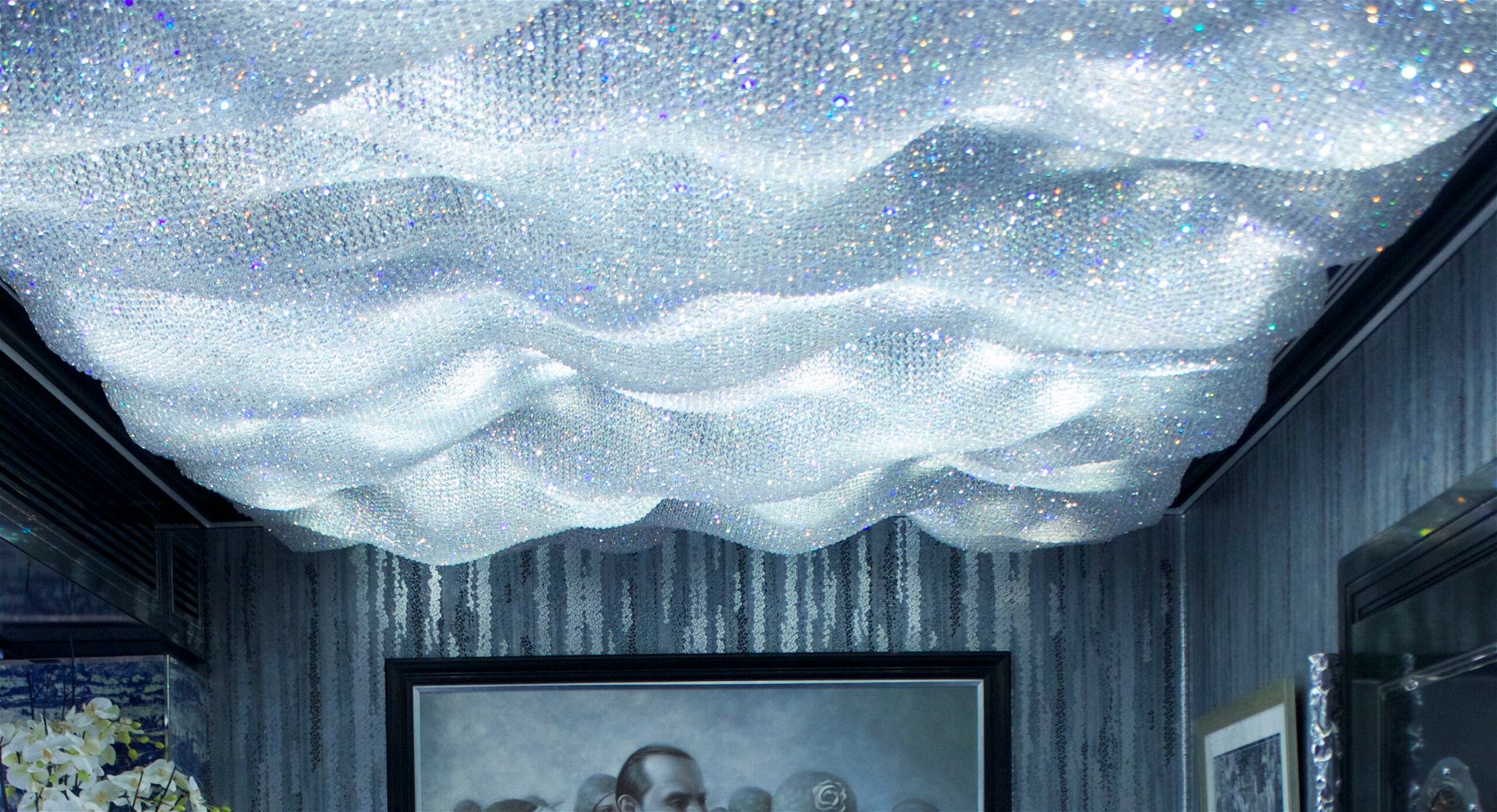
Arlington Street, London, UK, in collaboration with architects BBP. Formerly the Prime Minister’s residence, LDPI worked with specialist luminaire and chandelier manufacturers to design bespoke, decorative and architectural lighting. A 15-metre Swarovski chandelier forms the central feature of the staircase
Solutions Towards a More Sustainable Practice
My simple suggestion is to just go ahead and take that call, to analyse the need and provide below legislated standards if possible. For example, if the legislation is set at 70 lux and the designer provides 65 lux, this might not be a great difference in output, but it might create a greater impact in reducing the energy consumption and saving output, product and electricity. It’s the smaller actions like this that leads to greater sustainability and it’s a recreation of an industry.
In terms of manufacturers, we need to concentrate on longevity, especially for exterior products. We have products that are embedded on the ground and we need them to last for 5 or 10 years at the very least. So clients always have the cheaper quality option, which can tick all requirements, but a few expensive and better quality products will last them much longer. Here sustainability goes beyond calculations, it becomes a choice.

